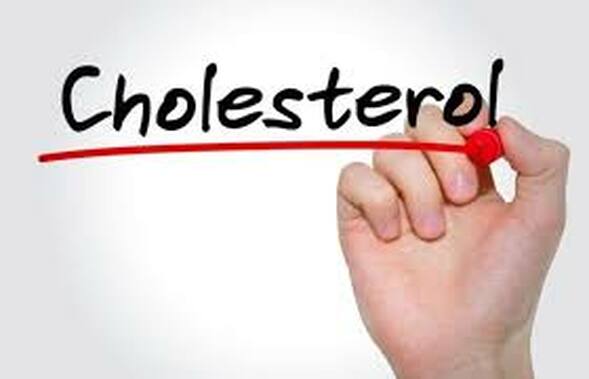
One of the early chapters in the book surrounds Cholesterol – Bad Boy or Innocent Bystander? The chapter challenges the information so often presented to us by arguing that cholesterol is not as bad as we’ve been led to believe.
Cholesterol is a type of fat made by every single cell in our body and an essential component of the cell membrane surrounding each of these cells. Additionally, it plays an important part in cognitive function, as well as many other roles, as a precursor for vitamin D and a role in regulating various hormones including adrenaline, oestrogen and testosterone. Dr Peter Brukner educates us on the fact that most of the cholesterol in the body is made by the body itself, while cholesterol ingested in food has very little effect on our total blood cholesterol! Cholesterol is self-regulated, and thus when we consume something that increases our cholesterol intake, the body automatically decreases its own production to keep cholesterol levels stable.
We have always been taught about good and bad cholesterol, otherwise known as HDL and LDL cholesterol. However, all cholesterol is the same. Cholesterol is not soluble in plasma (liquid that carries our blood cells) and thus requires lipoproteins (protein transporter) in order to travel throughout the body. There are various types of lipoproteins, such as very low-density lipoprotein (VLDL), low-density lipoprotein (LDL) and high-density lipoprotein (HDL). LDL particles are the major transporters of cholesterol around the body, taking it into cells where cholesterol levels are low, while HDL particles are thought to transport excess cholesterol back to the liver for disposal.
There are a couple major issues with the simple theory that LDL cholesterol = bad cholesterol. Firstly, LDL particles all vary in size; from large, ‘fluffy’ particles (harmless), to small and dense particles (bad). These small and dense particles are the ones often linked with damage to arteriole walls contributing to atherosclerosis and a cardiovascular event. Secondly, these cholesterol are only a problem when they become oxidised, which appears to be occur via the ingestion of polyunsaturated fats, in particular, vegetable oils. Unfortunately, standard blood tests do not actually tell us about the size of varying LDL particles (unless specifically requested), however Dr. Peter Brukner believes that blood triglyceride levels are a good proxy measure of the small and dense (bad) LDL particles. If your serum triglyceride levels are elevated (>1.5mmol/L) then it’s likely that the majority of your LDL particles are small and dangerous, while a result of <1.0mmol/L means that the majority of your LDL cholesterol are likely large and ‘fluffy’ (harmless).
Triglyceride levels correlate strongly with cardiovascular disease and Dr Peter Brukner believes they offer a clearer indication of your risk of CVD. These levels are often elevated in overweight and obese individuals and can be reduced by cutting down on sugar and carbohydrate intake (as they are made in the liver from any excess sugars that have not been utilised as energy), as well as losing weight.
Furthermore, HDL cholesterol, often looked at as the ‘good’ cholesterol has been shown to reduce the incidence of CVD. Dr Peter Brukner recommends looking at your triglyceride to HDL ratio.
As an example:
Triglycerides – 1.5mmol/L
HDL – 1.2mmol/L
Ratio = 1.5/1.2 = 1.25mmol/L
Dr Peter Brukner likes to aim for a ratio <1.5 but certainly under 2 is desirable. This has been shown as a good predictor for the risk of heart attack, as a low ratio is associated with low risk.
So, why has cholesterol been seen as the bad guy?
When the arteries of people with atherosclerosis have been examined, it has been found that areas of plaque where hardening occurred to be full of cholesterol. Therefore, cholesterol must be bad right? Wrong! Cholesterol plays a role in the immune response when damage occurs to artery walls therefore travelling to the area where a tear has occurred, while numerous studies have shown no link between heart disease and cholesterol levels. In fact, some studies have even shown higher cholesterol levels linked with lower rates of death via CVD, and visa versa (2). An analogy that he likes to use is that blaming cholesterol is like blaming firefighters for the fire, they’re always at the scene but they are not necessarily the cause!
Instead, there is a growing acceptance that inflammation is the key initiating event for atherosclerosis, caused by a poor diet including excess sugars, processed foods and vegetable oils; as well as a lack of physical activity, poor sleep and insulin resistance.
At Inspire Fitness for Wellbeing we work to optimise our client’s health via a combination of exercise, in the form of an individually tailored exercise program, as well as nutritional guidance in order to make the correct, healthiest choices to maximise our health and wellbeing, whilst preventing chronic disease and inflammation. For more information, please contact us on 9857 3007 to speak to a member of our team so we can begin working towards your optimal health!
References:
Dr Peter Brukner – ‘A Fat Lot of Good’
Harcombe Z, Baker JS, Cooper SM, Davies B, Sculthorpe N, DiNicolantonio JJ, Grace F. Evidence from randomised controlled trials did not support the introduction of dietary fat guidelines in 1977 and 1983: a systematic review and meta-analysis. Open heart. 2015 Jan 1;2(1):e000196.

 RSS Feed
RSS Feed
